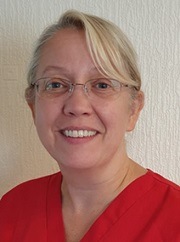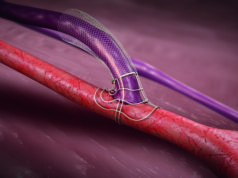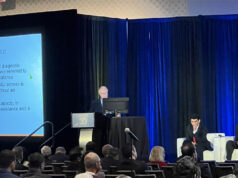
Early data have indicated that a national project, dubbed MAGIC (Managing access by generating improvements in cannulation), has improved cannulation techniques of haemodialysis accesses in UK centres. Catherine Fielding, a haemodialysis nurse and trainee advanced clinical practitioner (ACP) at the University Hospitals of Derby and Burton NHS Foundation Trust in Derby, UK—who is also leading the project—reported these findings at the Vascular Access Society of Britain & Ireland 2021 scientific meeting (VASBI; 16–17 September, virtual), noting that an increase in arteriovenous (AV) access rates was observed “sooner than expected” too.
MAGIC is a national project being supported by the Kidney Quality Improvement Partnership (KQuIP), and based on needling recommendations from the British Renal Society (BRS) and VASBI. Its main aim is to improve cannulation practice in the UK—with the hope that this will in turn preserve vascular access function and minimise complications in dialysis patients. According to Fielding, MAGIC is being implemented in UK centres via four key stages: establishing baseline measures; educating staff with eLearning packages, boosting patient awareness using posters and cards; and, finally, the ‘region designed’ phase, which involves working with the centre to develop a quality improvement project that suits its specific needs.
Fielding reported that a total of eight regions in the UK have decided to implement MAGIC to date—with London and North Wales having already begun this process, and Northern Ireland and Scotland among those set to start later this year. The North West, and Yorkshire and the Humber, are the only regions to have completed the MAGIC project as of September 2021, Fielding noted, before going on to present data from these two areas.
She reported that 11 months’ worth of data—encapsulating 3,480 cannulation events across 18 different main and satellite units—were available. “One of the first outcome measures we asked these centres to look at was cannulation technique,” Fielding added. “We did this by asking them to carry out a random audit of 10–40 cannulations per month in their unit.” This led to the frequency of rope ladder and buttonhole cannulation techniques—which are actively encouraged within the MAGIC project as they are associated with fewer complications than the area puncture approach—increasing from 53% to 78.9% over the course of 11 months.
Units were also asked to assess the rate of missed cannulation across 3,400 events, with more than one attempt being required to insert a needle on 226 occasions. This represented an increase from 5.2% to 13.5% in the rate of missed cannulation over time. “We think that two major things led to this increase,” Fielding stated. “Firstly, the nurses in these regions admitted that they were quite uncomfortable doing the measurement at the start, and felt it could be something they would be criticised for, so they may have underestimated the number of missed cannulations at the beginning of MAGIC—but that these estimations actually became more accurate as they became more comfortable and realised the data were being used constructively, rather than to criticise.”
“The other thing that may have happened is that we disrupted practice by introducing new cannulation techniques, leading to an increased rate of missed cannulation,” she continued. “But, as that practice becomes more established, we are hoping that we will then be able to reduce the rate of missed cannulation.” Fielding went on to note that the number of new AV accesses these regions were using for haemodialysis each month, as well as mean rates of AV access loss and infection, were assessed as well, with no significant differences being observed throughout the MAGIC project.
“We also asked them to look at prevalent AV access rates—the percentage of their patient population that was using a fistula or graft for haemodialysis—and found that these rates increased from 74.4% to 77.6% over the course of MAGIC,” Fielding said. “We do not know for sure why this happened, and we did not expect to see it, but we were really pleased with this outcome.” She concluded that MAGIC is a quality improvement project and is therefore more concerned with affecting positive changes in practice—something these data suggest has been achieved—than identifying causality.












